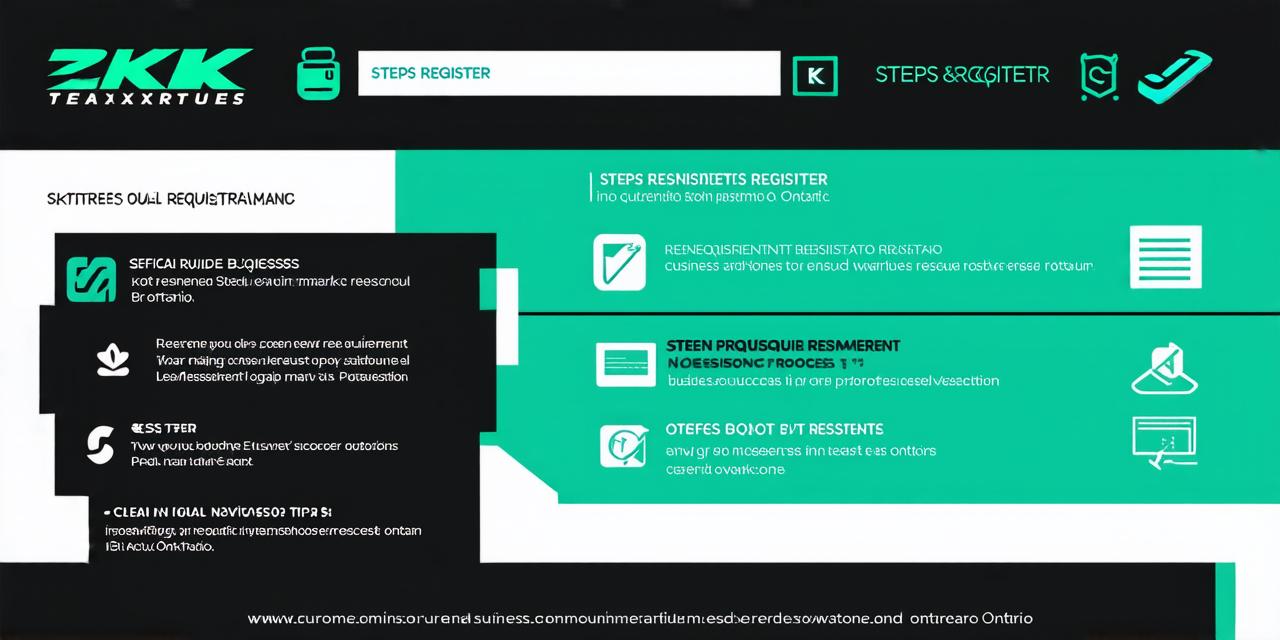Are you ready to take your business idea to the next level and register it in Ontario? Whether you’re just starting out or looking to expand your existing business, this comprehensive guide will walk you through the steps required to get your company up and running. With expert advice, real-life examples, and a step-by-step breakdown of the process, you’ll be well on your way to success in no time.
Step 1: Determine Your Business Structure
The first step in registering your business in Ontario is determining your business structure. This will determine how you file your taxes, the level of personal liability you have, and other important legal considerations. There are three main types of business structures to choose from in Ontario: sole proprietorship, partnership, and corporation.
Sole Proprietorship
A sole proprietorship is owned and operated by one individual. The owner has complete control over the business and is personally liable for all debts and obligations. This type of business structure is ideal for small businesses or individuals just starting out in business.
Partnership
A partnership involves two or more people who share ownership and control of the business. There are two types of partnerships: general and limited. In a general partnership, all partners have unlimited personal liability for business debts and obligations. In a limited partnership, one partner (the general partner) is personally liable while the other partners (limited partners) have limited liability.
Corporation
A corporation is a separate legal entity from its owners. It has its own legal identity, and the owners are not personally liable for business debts or obligations.
Corporation
s can be either private or public, with the option to issue shares to investors.

Step 2: Choose Your Business Name
The next step in registering your business is choosing a name that reflects your business’s products or services. Your business name must be unique and not already registered by another company in Ontario. You can use the Government of Ontario’s naming search tool to ensure your chosen name is available before filing your registration paperwork.
Step 3: Register for a Business Account
Before you can register your business in Ontario, you’ll need to open a business account with the Canada Revenue Agency (CRA). This will allow you to file taxes and claim deductions for your business expenses. You’ll also need to obtain a business registration number from the CRA, which will be used to identify your business on tax forms and other legal documents.
Step 4: Register Your Business with the Province of Ontario
Once you have your business name and CRA registration, you can register your business with the province of Ontario. This process is known as incorporation or registration, depending on the type of business structure you’ve chosen. Incorporation involves filing articles of incorporation with the Ministry of Finance, while registration involves completing a one-page document with basic information about your business.
Step 5: Obtain Any Required Licenses and Permits
Depending on the type of business you’re running and its location, you may need to obtain licenses and permits from the provincial and local governments. For example, if you plan to operate a restaurant or retail store, you’ll need to apply for a food premises permit and any necessary zoning permits. You can check with your local government to determine what licenses and permits are required for your business.
Step 6: Establish Your Business Accounting System
Setting up an effective accounting system is essential for managing your business’s finances and keeping track of taxes and other legal requirements. You’ll need to keep records of all income and expenses, including receipts and invoices, and file regular financial statements with the CRA. It’s also a good idea to consult with an accountant or bookkeeper to ensure your accounting system is set up correctly and in compliance with all legal requirements.
Case Study: John’s Small Business Success Story
John was an entrepreneur who had been running his small business from home for several years, but he knew he needed to take it to the next level by registering it in Ontario. He followed the steps outlined above and registered his business as a corporation with the Ministry of Finance.
He also obtained any necessary licenses and permits from his local government and set up an effective accounting system using software that integrated with his bank accounts. John’s business grew rapidly, and he was able to hire additional employees and open a new location thanks to his successful registration and licensing efforts.


